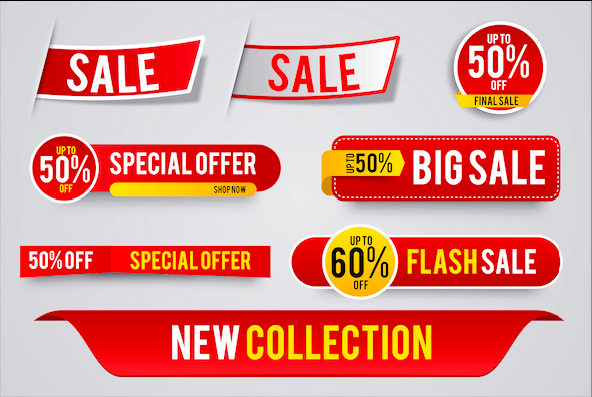A Comprehensive Guide To Boost Sales In Your WooCommerce Store
By Guest Author | Ecommerce

Are you experiencing a major dip in your WooCommerce store sales? Or are you looking for ways you can improve your business? Whatever category you belong to, you can have it all answered by going through this article.
This post elaborates on the most effective ways you can boost sales for your WooCommerce store. It will help you understand the reasons behind the lowering sales of your store and suggest better ways to improve it. Give it a quick read and save your store from losing more sales.
Offering coupons and discounts in your store never fails to capture the attention of your customers. If the coupons are compelling enough, shoppers are likely going to use them for themselves and even share offers among their family and friends.
Coupons can be used to attract new customers and for maintaining existing ones as well. To attract new customers you can come up with a ‘buy one, get one free’ deal, free shipping, first-order discounts, etc.

Credit: Freepik
To ensure customer retention you can make use of coupon strategies such as customer
purchase history-based discounts (nth order discounts), store credits, gift cards, etc.
WooCommerce has coupon functionality built into its core — and for advanced coupons, you can choose from several coupon extensions including smart coupons and discount rules.
Cart abandonments being a major threat to sales, you can create and offer coupons that bring the abandoned cart owners back to your website. If people don’t make it back to complete their purchase you can entice them to do so by sending attractive coupons via email. This extra push will bring back customers who left their cart due to trivial reasons.
Coupons are great sales boosters, but while creating coupon strategies, you should also consider if this aligns with your revenue margin and business goals. If you continue to offer mind-blowing deals with little regard for your financial state, it can cap your efforts for store growth — and even leave you in the negative.

Credit: Freepik
Site speed or loading time is a crucial element for any website, but when it comes to an online store it becomes a deal-breaker. People won’t spend another second in your store if it’s loading slowly. Their immediate action would be to exit your website and go to one of your competitors.
So how do you avoid it from happening to your store?
Well, for starters, initiate frequent monitoring of your site speed. There are many tools available to help you with it. For example, Pingdom, Google Pagespeed Insights, and GTMetrix are some of the popular ones available for this purpose.
With these tools, you can even monitor other areas of your website such as sign up, search, and checkout, etc. But once you know your page speed is low, how do you go about fixing it? How can you stop it from happening again? It is indeed a relevant question that you need to answer if you don’t want to lose any more of your sales and revenue.
Your website speed is hugely affected by the choice of your theme and your hosting provider. Themes aren’t just responsible for the look and feel of your website — they also influence your page speed. So when you are switching a theme or starting a new store, go for a theme that’s not only visually appealing but fast as well.
When it comes to hosting providers for Woocommerce, speed is a major selling point for them. All providers boast of their excellent hosting speed, while only a few of them keep their promise. Whether you are planning on migrating to another host or looking for a new one for your website, do your research. Ask current and past users, as well as looking at reviews on genuine review websites before deciding on one.
Some other things you can do on your website to improve its speed are website caching, image optimisation, and code optimisation.

Credit: Freepik
Getting your shoppers to trust your store and its products is very important to boost sales. If they don’t find any reasons to trust your store, it will leave them confused as to whether or not to purchase from your store.
The proven way to instil trust in your customers is by displaying trust signals like customer reviews and testimonials on your website. When they see a real person sharing their experience with the product or the store it will make them feel safe to spend their money on the product.
Make sure you only display verified reviews on your website and allow for video testimonials and other user-generated content. Many WooCommerce plugins help you to easily enable this for your store.
User experience doesn’t need much introduction. We have all gone through good and bad experiences while interacting with physical and digital products of all kinds. Whether a product stays in the market or not is hugely influenced by how easy it is to use. The harder it gets to use the faster users look for alternatives.
When it comes to a WooCommerce store, the theme holds the responsibility for ensuring a better user experience at your store. If your chosen theme is not a great fit for user experience, you can always customise them to meet your user requirements. It can be hard to find a theme tailored to the needs of your target users, so the best way can often be to customise them.
There are certain areas on your website that are crucial to user experience — such as its navigation, search feature and call-to-action buttons. A confusing navigation system will make it hard for users to find their way around your website. If they are unable to find the product they want, there is no point in them staying on your website anymore, and they will simply leave.
To ensure a better user experience you also need to have a clear call-to-action on your site. The ‘Add to Cart’ and ‘Buy Now’ buttons should be properly placed and visible to your users. They shouldn’t get drowned out by other decorative elements on your website.
Products should be easily searchable and product descriptions should be crisp and to the point, that help your potential customers to make their purchase decision easier and quicker. You can also conduct usability tests at frequent intervals to learn more about your users’ needs and make necessary changes in your store to meet them.

Credit: Freepik
Security is one of the few elements that should never be compromised if you are aiming for the faster growth of your WooCommerce store. Even a minor security breach on your website could have a huge impact on your store’s credibility, and your customers will hesitate to make purchases from your store for fear of exposing their card information.
If you want your customers to trust your store and spend their money without concern, you need to ensure that your store has a highly secure infrastructure. But that alone won’t do — you need to let them know about the top security measures that you have taken to keep their data safe on your website, especially at points where they may feel vulnerable, such as checkout, login, and registration.
When it comes to your website security SSL (Secure Socket Layer) certificate is a must. The lock icon displayed beside your website’s URL implies that your website is secure with SSL. It’s a very common and fundamental security practice that every website should follow to ensure its security.
Another important thing you need to do to prevent your website from any kind of security attack is updates. Timely updates can keep your website safe by providing immunity from all new kinds of malware, viruses, and similar forms of security threats. If you use third-party services or plugins in your store you need to take extra note of their updates and keep them updated.
Even if you do everything you could to keep your website secure, you can never be 100% sure. There will always be some parts of your website that you may have overlooked or a new kind of threat that you didn’t prepare it for. If the worst happens, it’s better to keep a backup of your site data to minimise the loss.
There are a plethora of plugins that offer automatic backup facilities along with other important security features such as website firewall, malware scanner, IP blocking, etc. Sucuri and Wordfence, are some of the popular ones, but there are many available.

Credit: Freepik
The checkout page is the most crucial point for any WooCommerce store. If your customers don’t go past that point, all the efforts that you took to bring them up to the point will be wasted. Your store’s increasing cart abandonment rate is a sign that your checkout page needs an immediate checkup followed by its optimisation.
How do you optimise your website’s checkout page for better conversions and fewer abandonments? It would be better to start by providing a faster checkout process. Customers wish to spend more time on choosing the products, reading their specifications and comparison, that they have little time left for checkout. Adding the WordPress Shopping Cart plugin to your store helps you achieve this.
If you force your potential customers to fill out larger forms, you will be disappointing them to the point that they will either cancel the purchase or postpone it to a later date by leaving the item in the cart. This points to the importance of providing shorter checkout forms and allowing guest checkout at your store.
Another important checkout element you need to consider is the number of payment methods that you have allowed in your store. If the customer is unable to find a payment method suitable for them they won’t proceed with the purchase either. Make sure that you allow all popular payment methods used by your target customers on your website.
Since most customers feel vulnerable entering their card information, owing to security concerns, displaying trust badges is a great idea. You can also highlight your return policy like easy returns, and a money-back guarantee., as a trust booster. This will give them a sense of security and help them continue with the process peacefully.
Search engine visibility is a key factor in bringing traffic and thus boosting sales of your WooCommerce store. To rank higher in search results you need to optimise your website’s content for it.
When it comes to a WooCommerce store, product pages are the most relevant pages to be ranked. You can give special attention to its meta-descriptions and craft product descriptions in a way that pleases both your customers and the search engine bots.

Credit: Freepik
At this point, you analyse whether all your efforts are bearing fruit: what did well? What failed? And what needs to be improved? Going through this analysis is important to keep your store on the growth curve. Always remember: ‘What gets measured gets managed’.
Along with the variation in the sales graph, you should also monitor other statistics such as conversions, traffic, bounce rate, and cart abandonment to make sure you are going in the right direction. Keeping track of all the data helps find out issues with your store, and provides valuable insights into troubleshooting.
You can use a variety of tools to analyse the data. Google Analytics is the most popular among them. You can integrate your WooCommerce store with Google analytics using the MonsterInsights plugin.
Patience is key in these situations, sometimes it might take some time to see the results. Even if it didn’t work out as you expected, don’t lose hope. It might be some small issues that you may have overlooked causing it all, find them out and fix them.